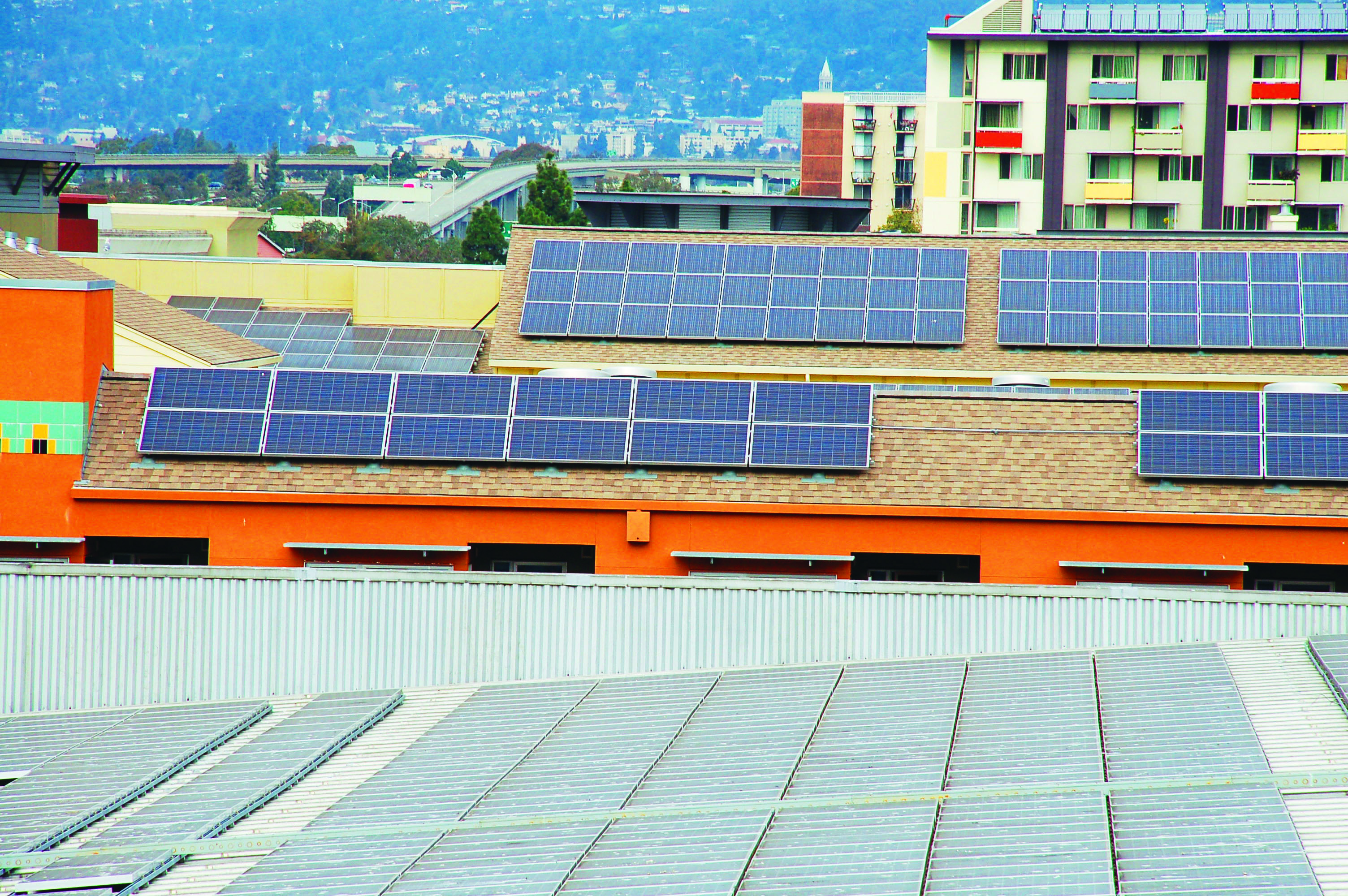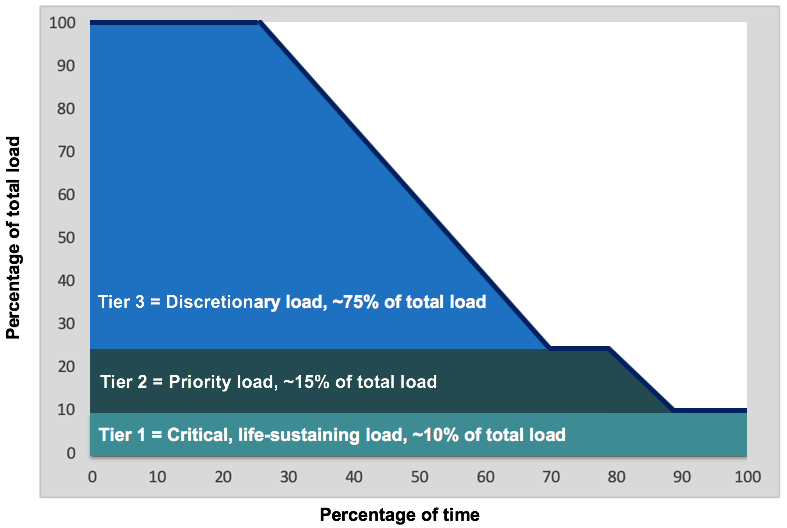Editor’s Note: If you’re arriving here from an email communication looking for an article about coho salmon, please follow this link to continue: https://bayareamonitor.org/article/coexisting-with-coho-during-drought/
Sorry for the confusion!

With the growing push for building electrification in the region, many residents worry about becoming increasingly reliant on the main power grid. Experience has already shown that flashlights and a barbecue grill on the patio or balcony aren’t always enough to be safe and comfortable during an outage.
Power outages can be particularly hard on disadvantaged residents. For a household on food stamps, replacing spoiled food can require non-existent funds. The elderly or disabled worry about prescriptions that must be refrigerated, medical equipment, and staying warm or cool enough. Even maintaining cell phone communication with work or school can be impossible if someone is unable to access power to charge the device.
Households, institutions and businesses have been turning to small generators to deal with outages. However, these are less commonly used for affordable multi-family housing units, and they have their downsides. Diesel generator exhaust fumes are toxic and must be kept out of living areas. If generators aren’t well-maintained and operated at a safe distance from buildings, a malfunction may start a fire. Denser residential neighborhoods, lack of funds for new equipment and upkeep, and poor indoor ventilation all make generators a dicey proposition for many underserved communities.
Microgrids are an alternative to generators that can make communities less dependent on the main power grid, and they are also climate-friendly if they are powered by renewable energy. As explained in a previous Monitor article, microgrids include a power source linked to batteries that store excess energy, and a controller distributes the energy to users as needed. A key feature is that the microgrid can be part of the main grid operated by a utility until there is an outage, when the controller can isolate it and distribute power just to the microgrid’s own facility or community. Using battery storage to supplement the renewable power source means power is available continuously and for a longer time.
Local jurisdictions are already using microgrids to keep fire engines rolling where they’re needed, and treat wastewater properly. They are also including microgrids in plans for housing and serving their neediest residents. As microgrids have moved from pilot projects to established use in multiple contexts, the costs of designing and building them have dropped, making them an attractive solution for many of those communities that are especially vulnerable during outages.
Clean Coalition, a nonprofit working at maximizing the use of renewable energy, set up a microgrid for Valencia Gardens, a 260-unit housing development in the middle of the Mission District in San Francisco. Valencia Gardens serves low-income and elderly residents who are at risk during power outages. Executive Director Craig Lewis explained that the Valencia Gardens microgrid draws power from solar panels installed on every building in the complex, and distributes it to individual apartments, with any excess stored in batteries or sold to the main grid. If the microgrid needs to be islanded from the main grid, the software will allocate the available power first to what Clean Coalition defines as Tier 1 needs, essential functions such as refrigeration and medical equipment, approximately 10 percent of the total usage, which would be powered continuously. Tier 2, important but not critical needs, are about 25 percent of the need and could be supplied up to 90 percent of the time. The remaining Tier 3 needs would be powered most but not all of the time.

Tier usage for a solar microgrid designed for Santa Babara University. Courtesy Clean Coalition
Because microgrids can have multiple configurations of power sources and storage, they are flexible enough to be used in a variety of situations, including places where people live only temporarily. The Santa Clara County Affordable Housing Commission needed help on providing power to a tiny homes temporary housing project for needy families. Hilary Barroga, a county program manager, explained that the tiny houses were located in the old City Hall parking lot and would have had to connect to an old transformer that the city planned to replace.
The county was referred to BoxPower for a solution. BoxPower’s microgrids are packaged like kits in shipping containers, making them a good fit for situations where standard utility installations are difficult. “The Santa Clara project was planned to last for only two years,” said Jenna Herzog from BoxPower, “and getting utilities installed would have cost over $650,000 and taken about 8 months, so that wasn’t practical. The Bay Area Air Quality Management District was encouraging renewable energy, not diesel generators.”
BoxPower’s solar microgrid installation, in two shipping containers, took three days. Barroga noted an additional advantage of the two-shipping-container installation. If the county discontinues the project or moves the tiny homes, the microgrids can easily be relocated, either together or singly.
Barroga commented that planning to use microgrids was more challenging than simply plugging into the main utility grid. “You really need to know load requirements ahead of time, calculate the number of batteries needed and so forth, or it becomes difficult to add a couple more refrigerators or another building.” She added that this learning experience will lead to improved predictions in the future.
Installing microgrids for the neediest residents can add to the resiliency of the whole community. Sometimes, a facility with an “islanded” microgrid can be an oasis in an area without power, as happened at the Blue Lake Rancheria in Humboldt County during a lengthy planned power shutdown. The casino provided space for a Red Cross emergency facility, as well as a hub for fuel, communications and other needs.
In San Francisco, Lewis cited the self-sufficiency at Valencia Gardens, noting, “In an emergency, moving all of those people into other shelters would take a lot of first-responder resources and overload those shelters — it makes a lot more sense to have them shelter in place.”
“No man is an island,” goes the quote, pointing out how interconnected we all are – but sometimes a microgrid becomes an island and it benefits everyone, from those managing an over-extended power grid to an elderly lady on oxygen with a week’s worth of groceries in her refrigerator.
Embedded Video: Temporary shelters for unhoused families in San Jose, powered by microgrids. Approx run time: 3min. Courtesy BoxPower Inc.

